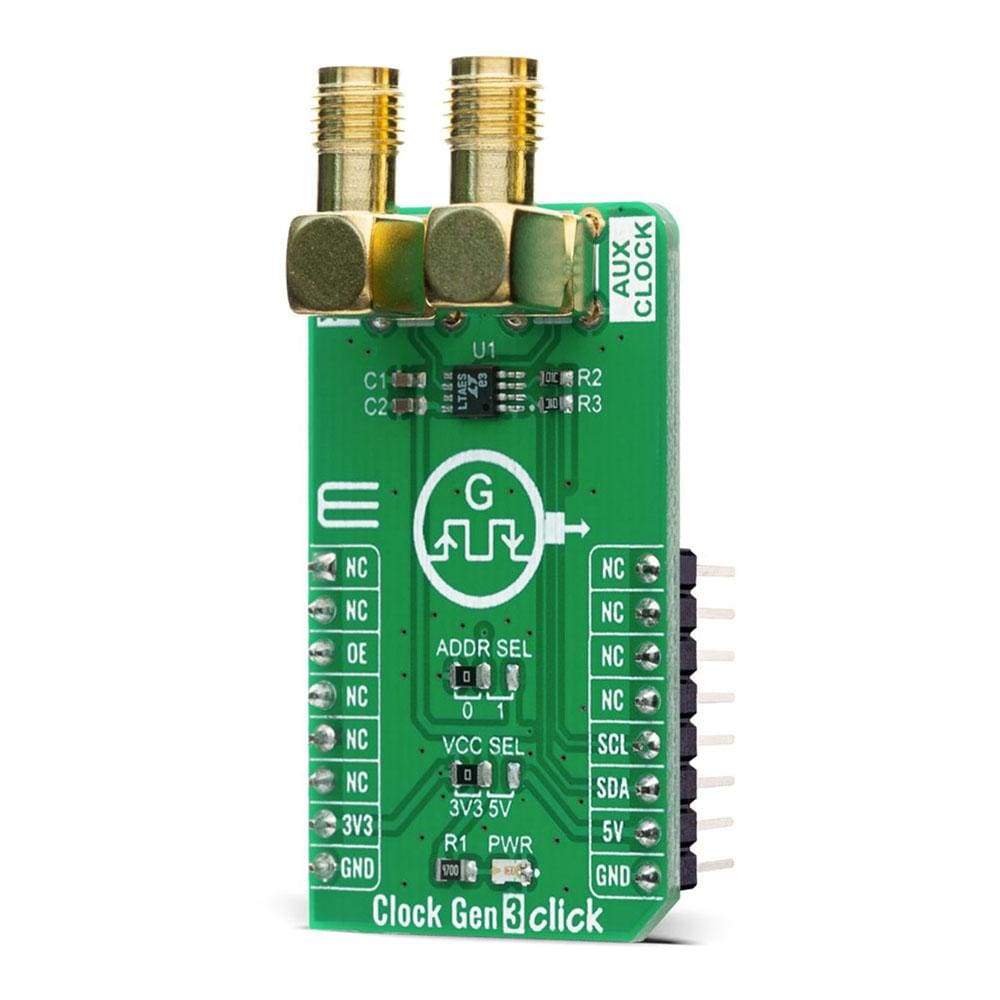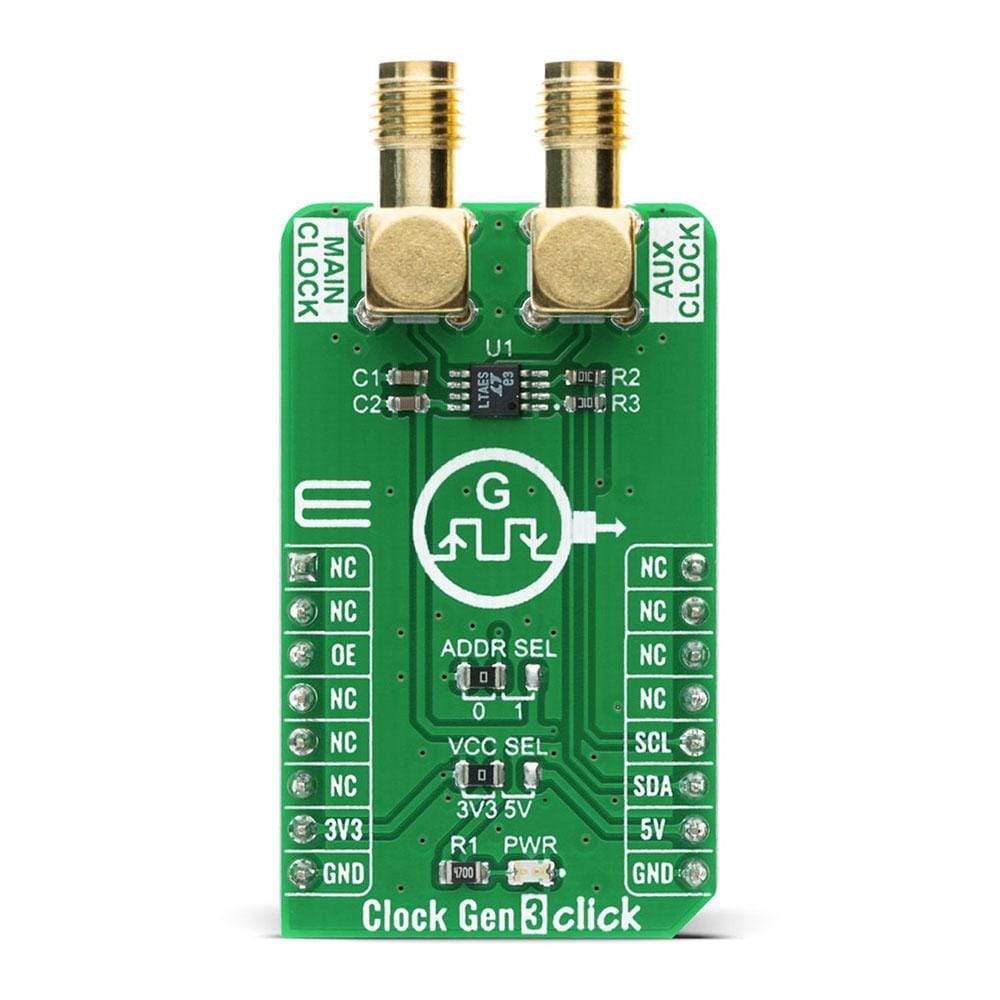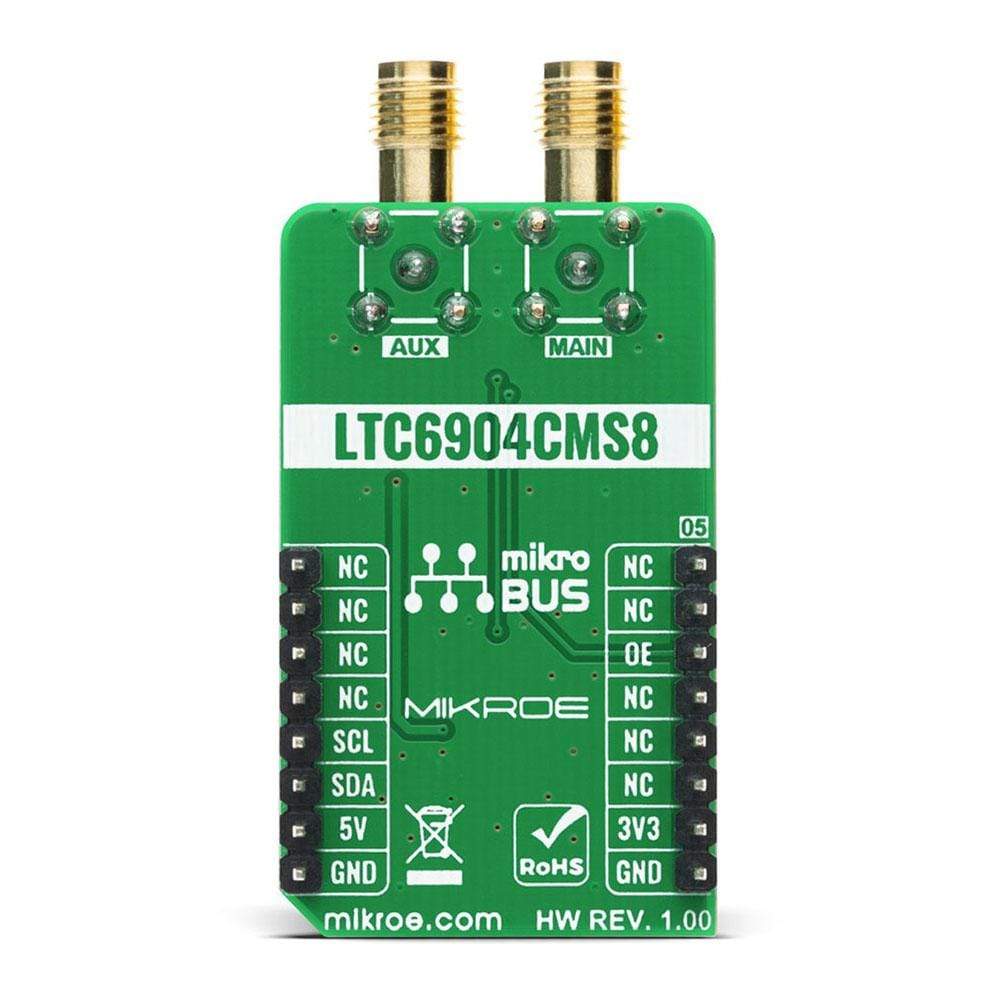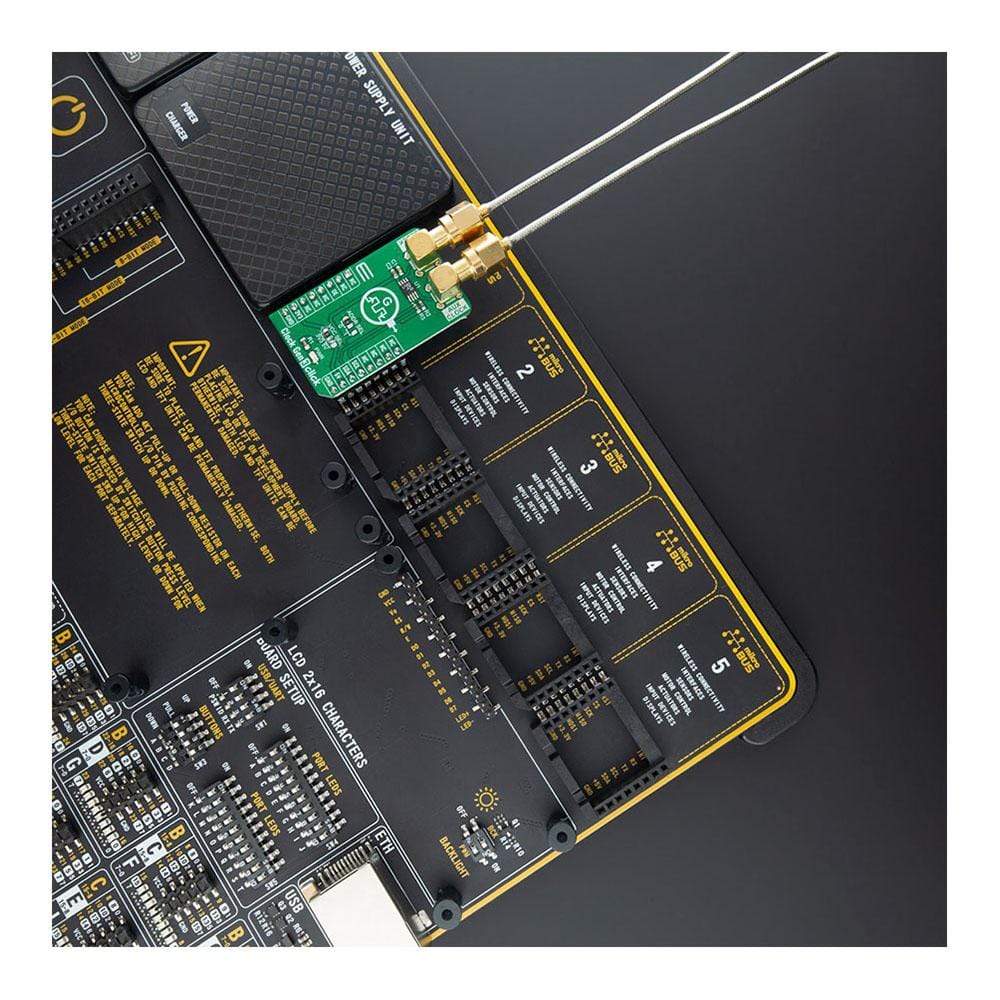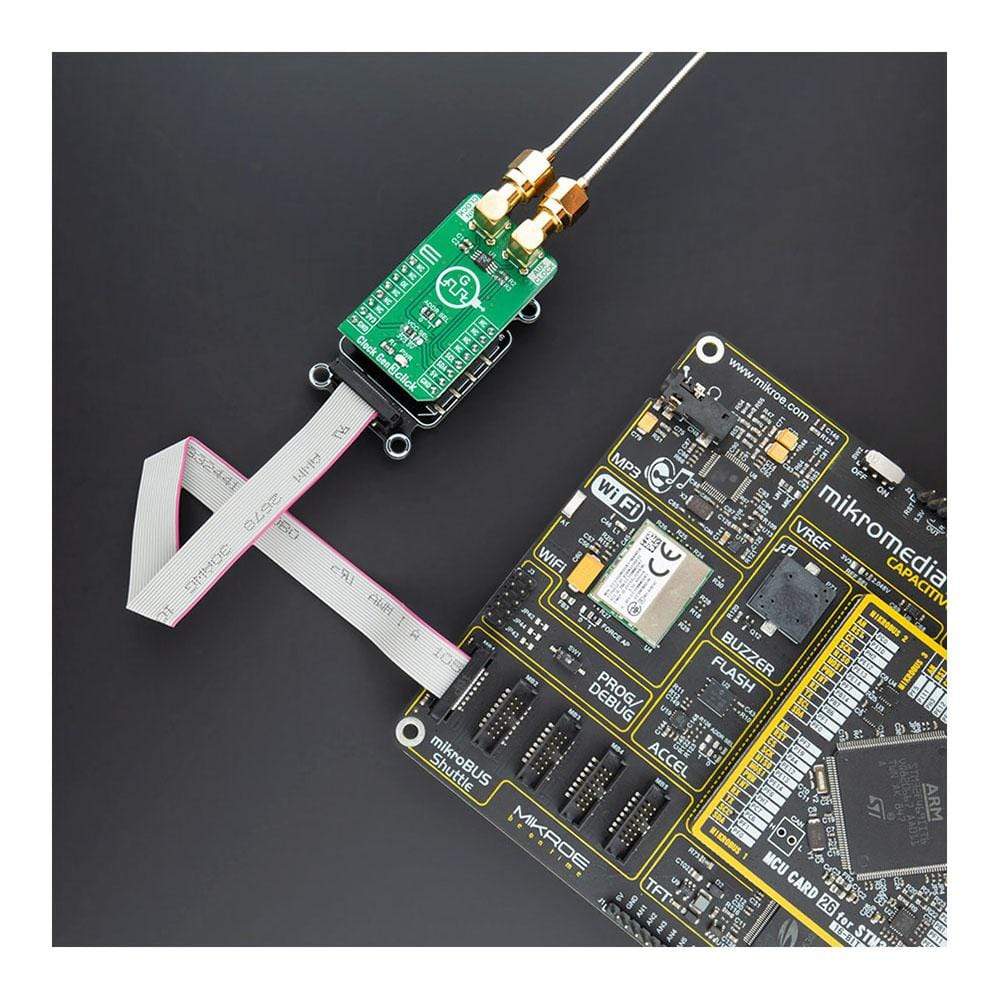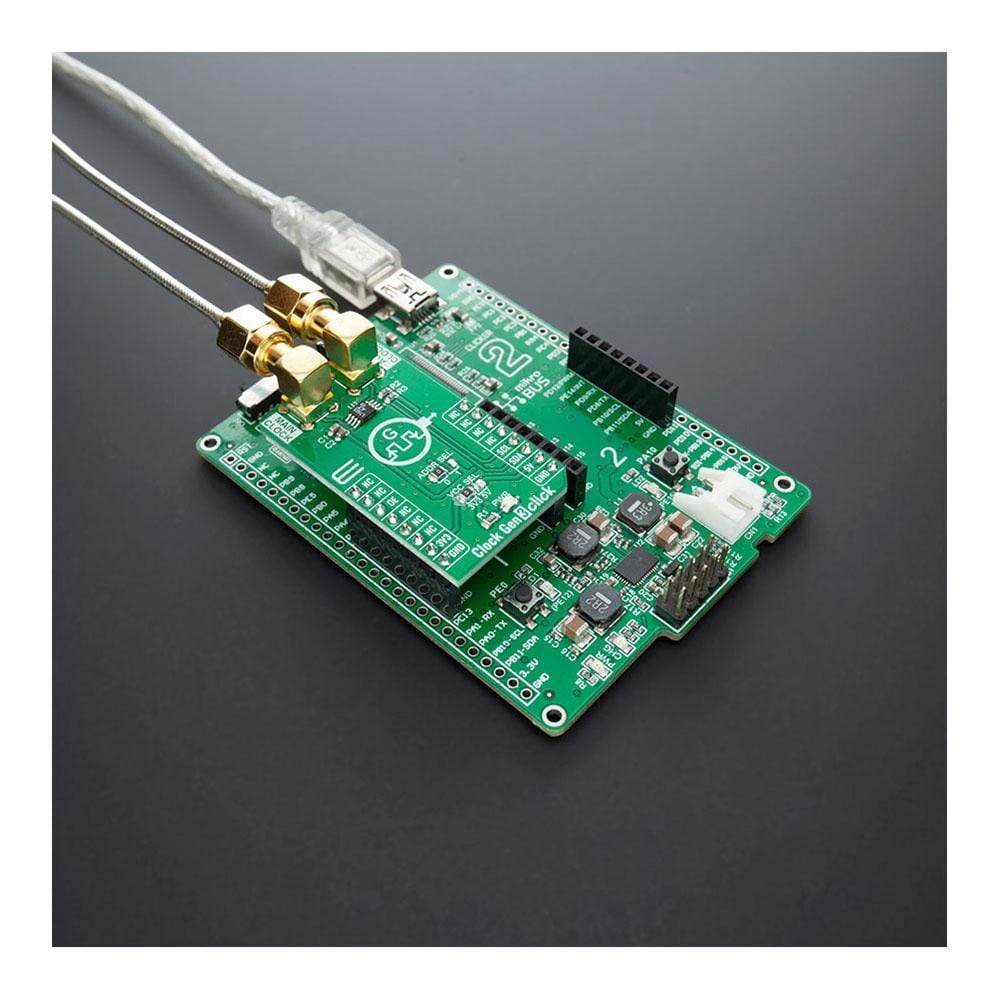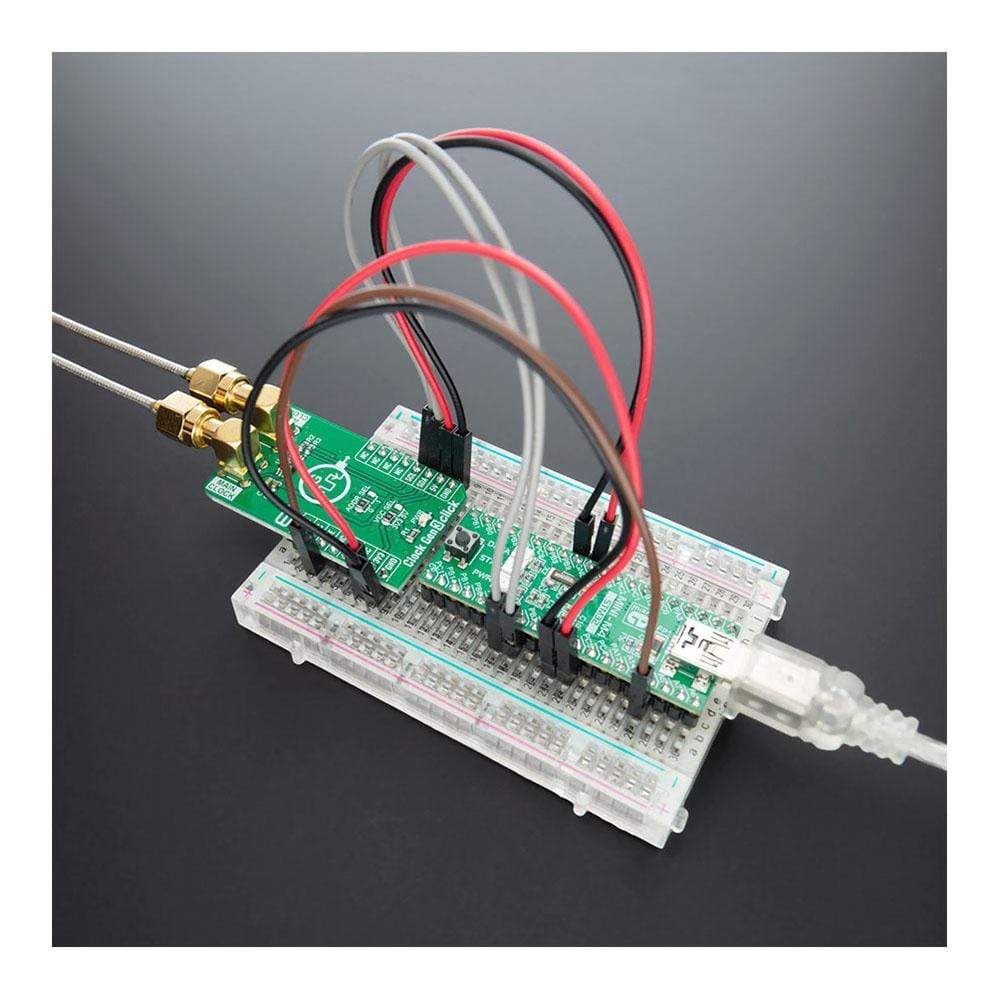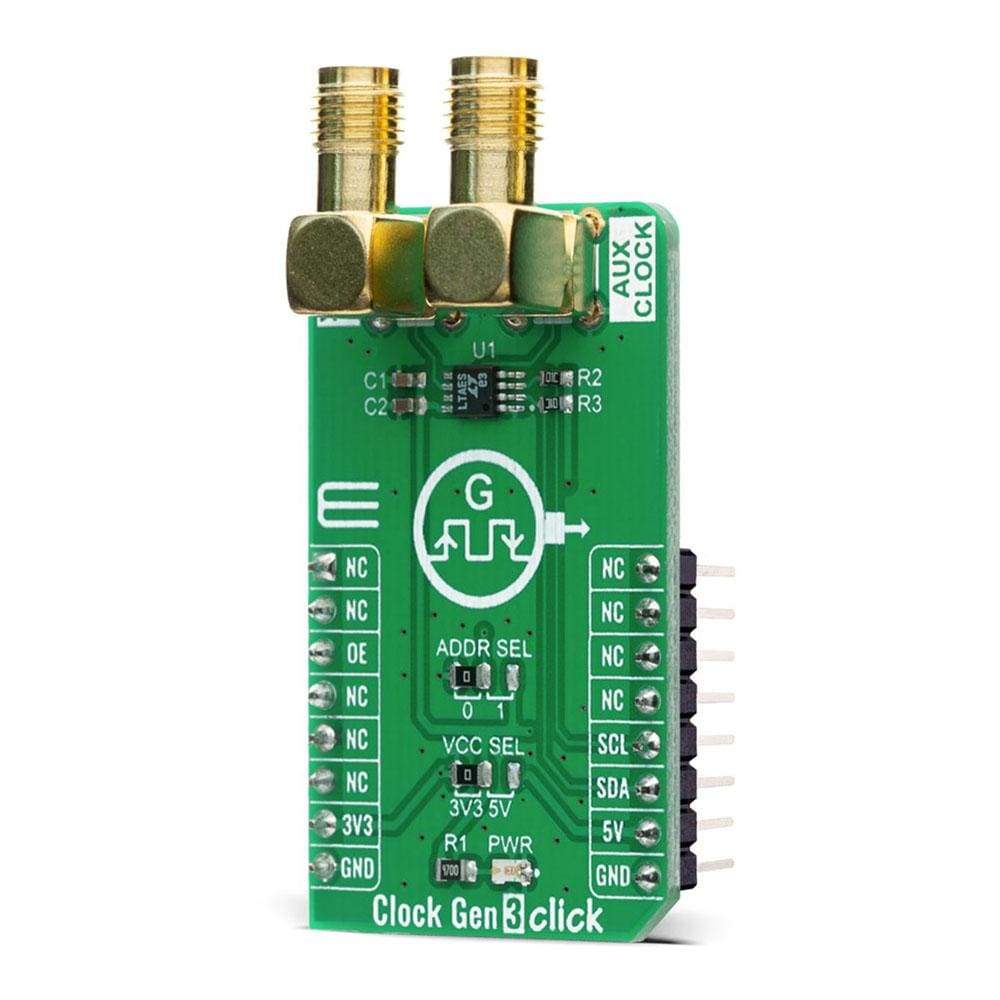
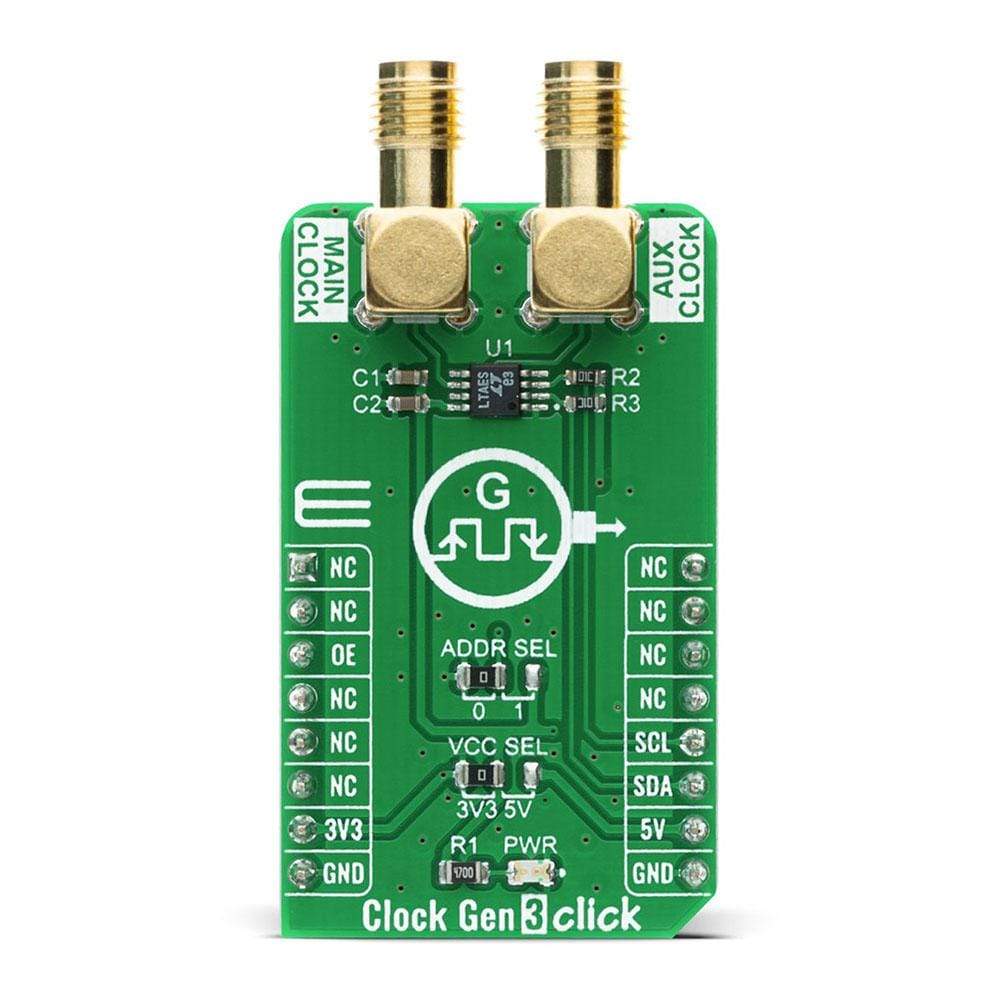
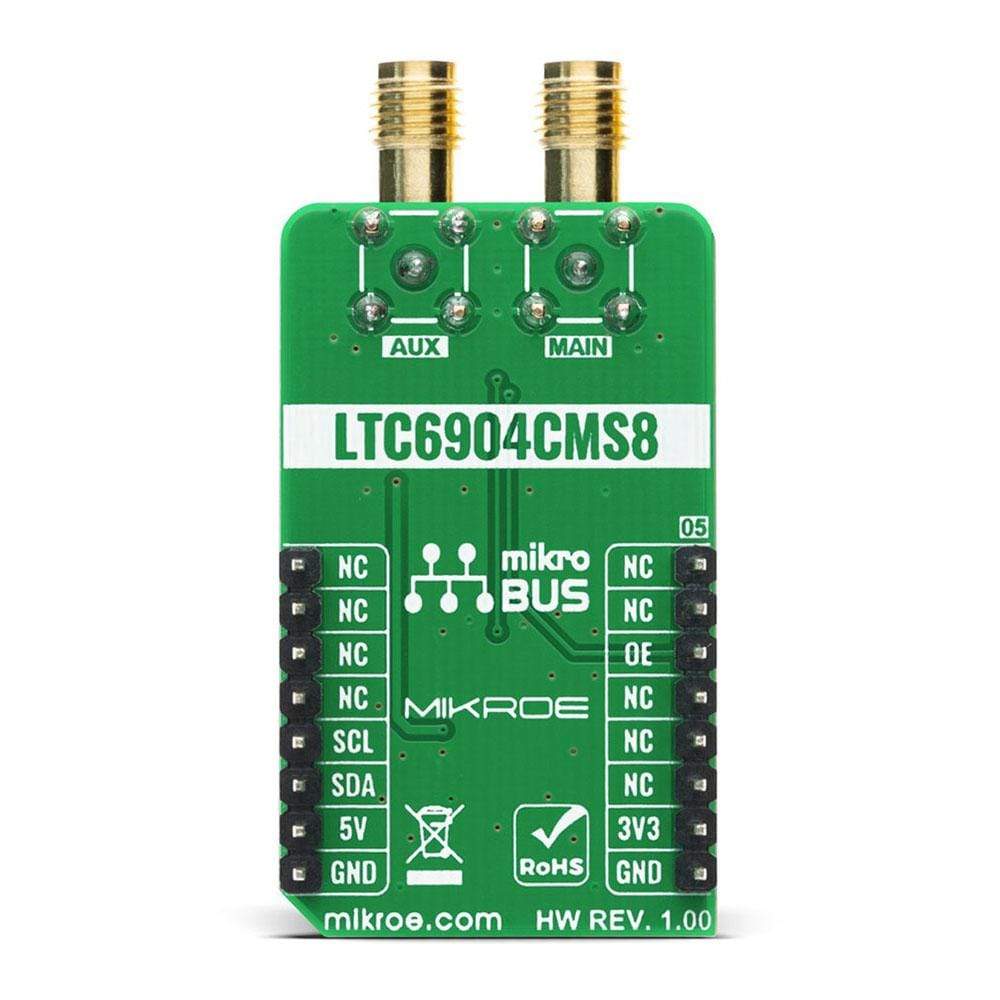
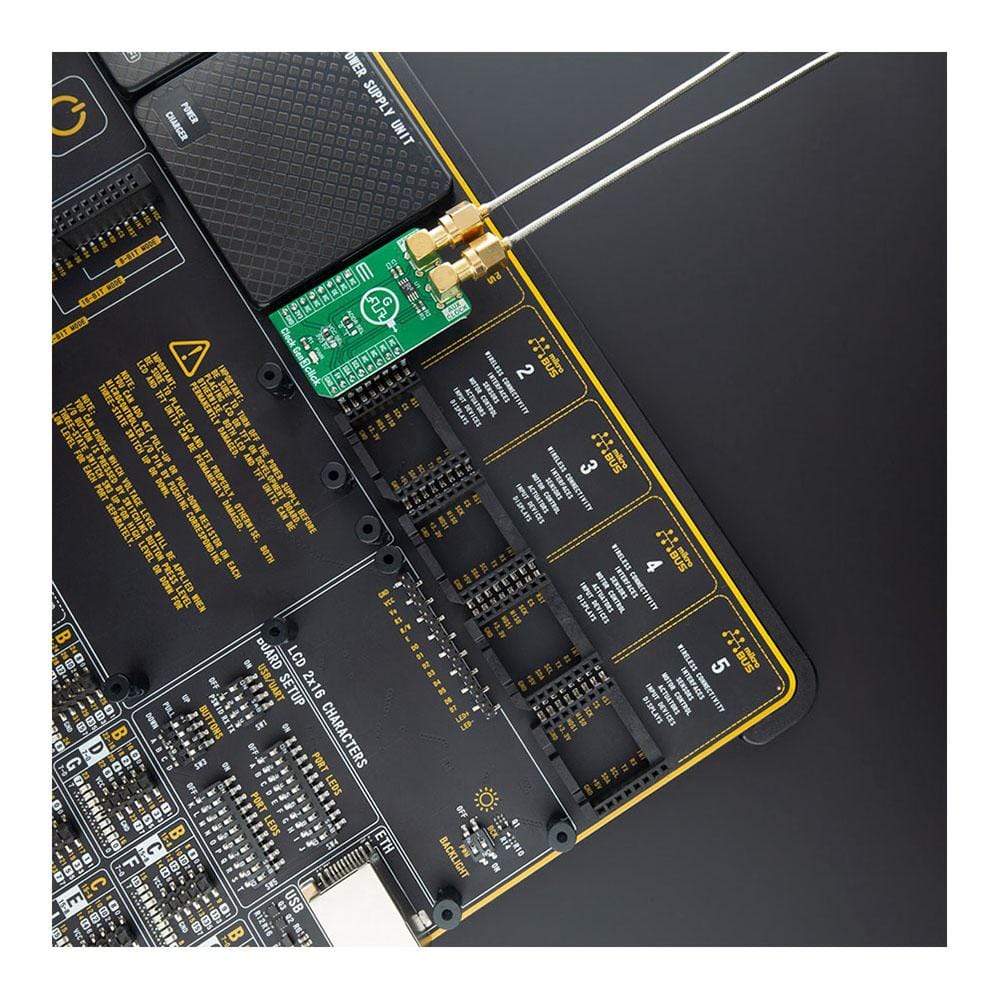
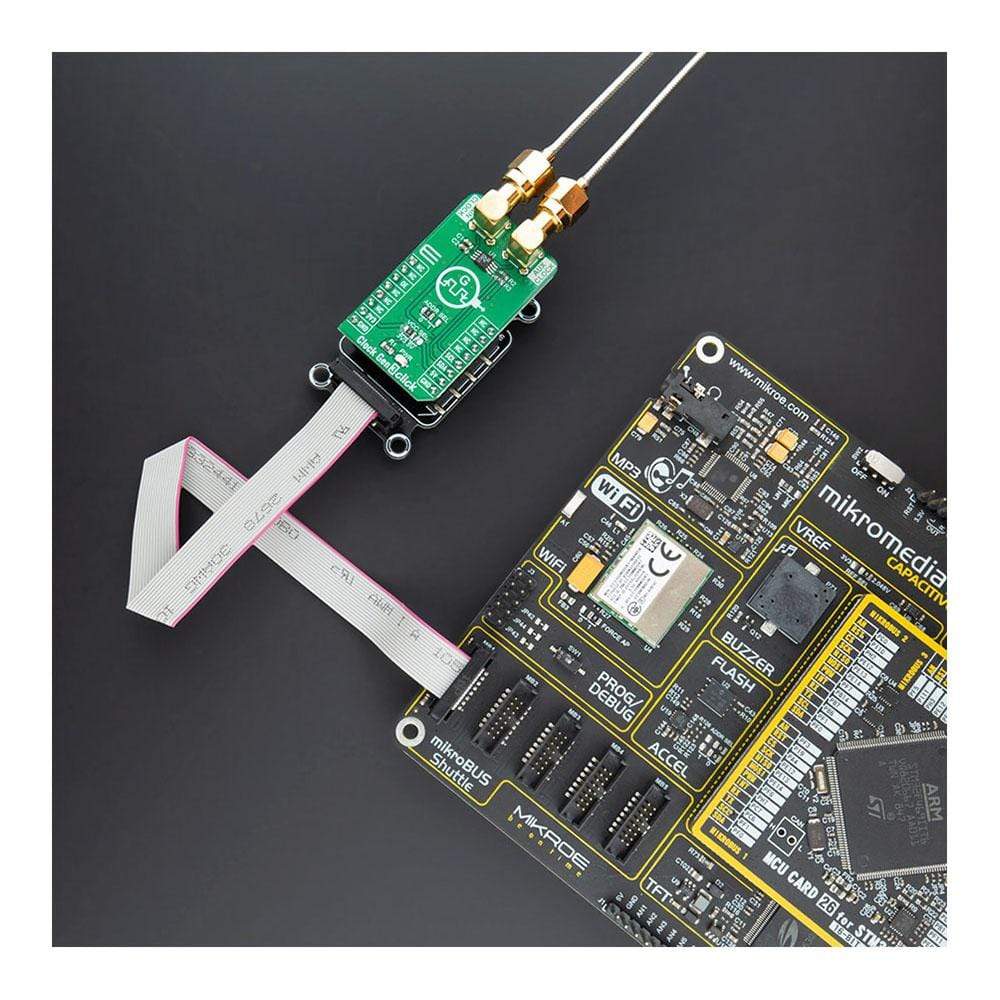
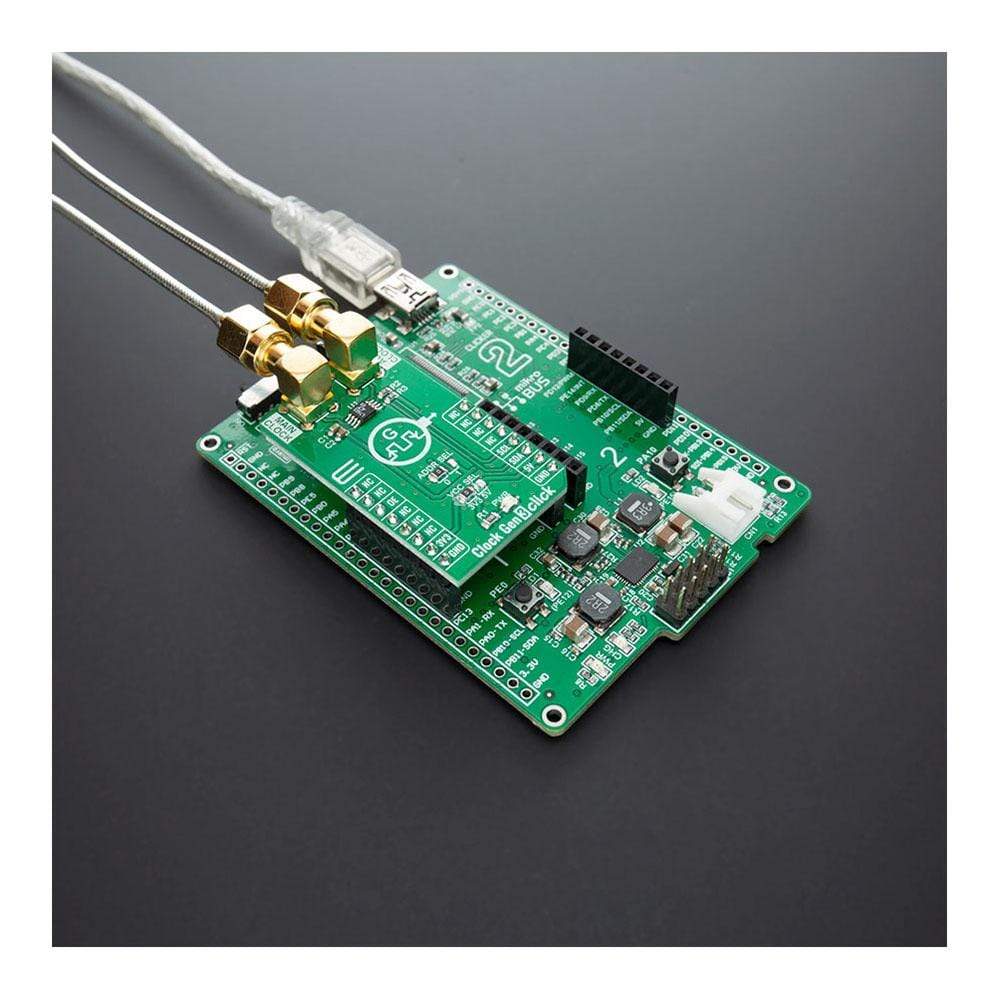
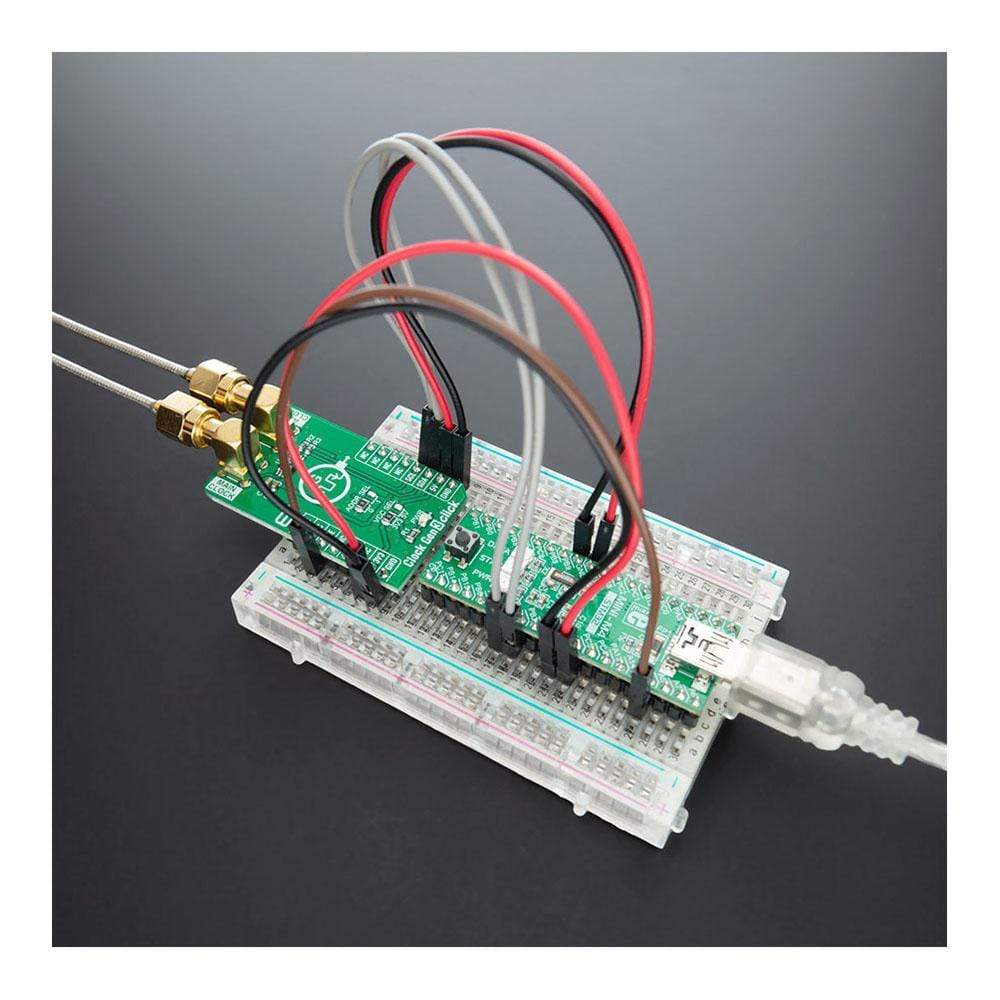
Overview
The Clock Gen 3 Click Board™ features a low power self-contained digital frequency source providing a precision frequency from 1kHz to 68MHz, set through a serial port. The Clock Gen 3 Click Board™, an I2C configurable clock generator, features the LTC6904 from Analog Devices and requires no external components other than a power supply bypass capacitor, and it operates over a single wide supply voltage range of 2.7V to 5.5V. The LTC6904 features a proprietary feedback loop that linearizes the relationship between digital control settings and frequency.
It has many features that make it attractive for various applications such as a microcontroller clock source, clock source for a switched capacitor filter, or general replacement for a DAC/VCO combination.
Downloads
Das Clock Gen 3 Click Board™ verfügt über eine stromsparende, in sich geschlossene digitale Frequenzquelle, die eine Präzisionsfrequenz von 1 kHz bis 68 MHz liefert, die über einen seriellen Anschluss eingestellt wird. Das Clock Gen 3 Click Board™ , ein I2C-konfigurierbarer Taktgenerator, verfügt über den LTC6904 von Analog Devices und benötigt keine externen Komponenten außer einem Bypass-Kondensator für die Stromversorgung. Es arbeitet über einen einzigen weiten Versorgungsspannungsbereich von 2,7 V bis 5,5 V. Der LTC6904 verfügt über eine proprietäre Rückkopplungsschleife, die die Beziehung zwischen digitalen Steuerungseinstellungen und Frequenz linearisiert.
Es verfügt über viele Funktionen, die es für verschiedene Anwendungen attraktiv machen, beispielsweise als Taktquelle für Mikrocontroller, als Taktquelle für einen Schaltkondensatorfilter oder als allgemeiner Ersatz für eine DAC/VCO-Kombination.
| General Information | |
|---|---|
Part Number (SKU) |
MIKROE-4171
|
Manufacturer |
|
| Physical and Mechanical | |
Weight |
0.023 kg
|
| Other | |
Country of Origin |
|
HS Code Customs Tariff code
|
|
EAN |
8606018717958
|
Warranty |
|
Frequently Asked Questions
Have a Question?
Be the first to ask a question about this.

